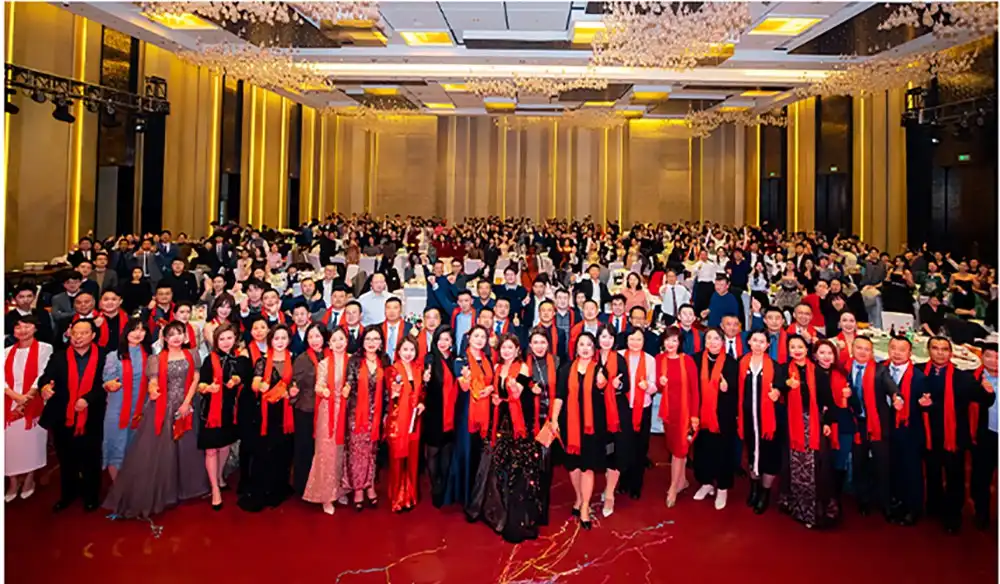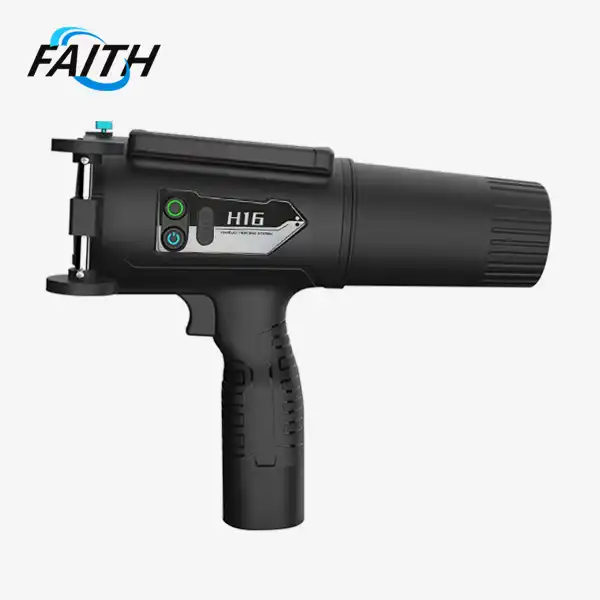Why OEM/ODM Handheld Inkjet Printers Are Ideal for Bottling in 2025?
In 2025, the bottling industry is experiencing a significant shift towards more efficient, flexible, and cost-effective solutions. At the forefront of this revolution are OEM/ODM handheld inkjet printer for bottles. These innovative devices are set to transform the way manufacturers approach product labeling and coding. In this comprehensive guide, we'll explore why these printers are becoming the go-to choice for bottling operations and how they're shaping the future of the industry.
The Evolution of Bottle Printing Technology
The journey of bottle printing technology has been nothing short of remarkable. From traditional methods like screen printing and paper labels to more advanced techniques, the industry has constantly evolved to meet changing demands. However, the advent of handheld inkjet printers for bottles marks a significant leap forward.
Traditional Bottle Printing Methods vs. Modern Handheld Inkjet Printers
Traditional bottle printing methods often involved complex setups, high costs, and limited flexibility. In contrast, modern handheld inkjet printers offer unparalleled versatility and efficiency. For instance, Faith's KD360-M model, weighing just 240g, redefines the concept of "lightweight and efficient" in the industry.
These printers allow for quick changes in print designs, making them ideal for short production runs and customized batches. Unlike their predecessors, they can print on various materials, including glass, plastic, and metal, without the need for separate equipment or lengthy setup times.
Technological Advancements Driving the Shift
Several key technological advancements are propelling the adoption of handheld inkjet printers in the bottling industry:
- High-resolution printing capabilities (up to 600 DPI)
- Quick-drying ink formulations suitable for multiple substrates
- AI-driven defect detection systems
- Multi-language interfaces catering to global production teams
These features, combined with the compact and portable nature of devices like Faith's KD360-M, are making handheld inkjet printers an attractive option for bottling companies of all sizes.
Benefits of OEM/ODM Handheld Inkjet Printers in Bottling
The adoption of OEM/ODM Faith printers brings numerous advantages to the bottling industry. Let's delve into the key benefits that are making these devices indispensable for modern bottling operations.
Enhanced Flexibility and Customization
One of the standout features of handheld inkjet printers is their ability to offer unparalleled flexibility in bottle labeling. With these devices, manufacturers can:
- Easily update expiration dates and batch codes
- Create customized labels for special editions or promotions
- Adapt to changing regulatory requirements without significant downtime
This level of flexibility is particularly valuable in an era where consumer preferences are rapidly changing, and product differentiation is key to success.
Cost-Effectiveness and Operational Efficiency
OEM/ODM handheld inkjet printers offer significant cost savings compared to traditional labeling methods. Here's how:
- Reduced setup times and minimal wastage
- Lower maintenance costs due to modular design (as seen in Faith's KD360-M)
- Elimination of pre-printed label inventory
- Decreased downtime for label changes or equipment maintenance
Moreover, the operational efficiency gains are substantial. With features like Type-C fast charging and long-lasting batteries (8+ hours of operation), these printers ensure continuous production with minimal interruptions.
Improved Product Traceability and Quality Control
In an age where product traceability is paramount, handheld inkjet printer for bottles offer robust solutions:
- Real-time printing of batch codes and expiration dates
- Integration with inventory management systems
- AI-driven quality control to ensure print accuracy
- Enhanced recall management capabilities
These features not only improve compliance with regulatory standards but also boost consumer confidence in product quality and safety.
Future-Proofing Bottling Operations with OEM/ODM Handheld Inkjet Printers
As we look towards 2025 and beyond, it's clear that OEM/ODM handheld inkjet printers will play a crucial role in future-proofing bottling operations. Let's explore how these devices are aligning with emerging industry trends and requirements.
Meeting Sustainability Goals
Sustainability is a growing concern in the bottling industry. Handheld inkjet printers contribute to more sustainable operations by:
- Reducing label waste through on-demand printing
- Minimizing the use of chemicals and solvents in the printing process
- Lowering energy consumption compared to traditional labeling methods
- Supporting the use of eco-friendly inks
By adopting these printers, bottling companies can significantly reduce their environmental footprint while meeting consumer demands for more sustainable packaging solutions.
Adapting to Industry 4.0 and Smart Manufacturing
The bottling industry is rapidly moving towards Industry 4.0 and smart manufacturing principles. OEM/ODM handheld inkjet printer for bottles are at the forefront of this transition:
- IoT integration allows for seamless connectivity with other production systems
- Real-time data collection and analysis improve overall equipment effectiveness (OEE)
- Cloud-based management enables remote monitoring and control
- AI-driven predictive maintenance reduces unexpected downtimes
These features ensure that bottling operations remain competitive and efficient in an increasingly digitized manufacturing landscape.
Addressing Evolving Regulatory Requirements
As regulatory requirements for product labeling become more stringent and complex, handheld inkjet printers offer the flexibility to adapt quickly:
- Easy updates to meet new labeling standards
- Capability to print variable data for region-specific compliance
- Enhanced traceability features to support regulatory audits
- Multi-language support for global markets
This adaptability ensures that bottling operations can remain compliant with minimal disruption to their production processes.
Conclusion
The adoption of OEM/ODM handheld inkjet printer for bottles is set to revolutionize the bottling industry in 2025. These innovative devices offer unparalleled flexibility, cost-effectiveness, and efficiency, making them an ideal choice for forward-thinking manufacturers. As we've explored, the benefits extend far beyond simple labeling, encompassing improved traceability, sustainability, and adaptability to Industry 4.0 principles.
For businesses looking to stay ahead of the curve and future-proof their bottling operations, investing in high-quality handheld inkjet printers is a strategic move. As a leading manufacturer and supplier in this field, Shenyang Faith Technology Co., Ltd offers cutting-edge solutions like the KD360-M model, which embodies the latest advancements in portable printing technology.
To learn more about how our handheld inkjet printers can transform your bottling operations or to discuss your specific needs, please don't hesitate to contact us at sale01@sy-faith.com. Our team of experts is ready to help you find the perfect printing solution for your business, ensuring you're well-equipped to meet the challenges and opportunities of the bottling industry in 2025 and beyond.

FAQ
What makes OEM/ODM handheld inkjet printers ideal for bottling in 2025?
OEM/ODM handheld inkjet printers offer unparalleled flexibility, cost-effectiveness, and efficiency. They provide high-resolution printing, quick-drying ink technology, and compatibility with various materials. These printers also support Industry 4.0 integration and help meet sustainability goals.
How do handheld inkjet printers improve operational efficiency in bottling?
These printers reduce setup times, minimize wastage, and lower maintenance costs. They eliminate the need for pre-printed label inventory and decrease downtime for label changes. Features like long-lasting batteries ensure continuous production with minimal interruptions.
Can handheld inkjet printers adapt to changing regulatory requirements?
Yes, they offer easy updates to meet new labeling standards, can print variable data for region-specific compliance, and support multi-language printing for global markets. This adaptability ensures bottling operations can remain compliant with minimal disruption.
How do these printers contribute to sustainability in bottling operations?
Handheld inkjet printers reduce label waste through on-demand printing, minimize chemical use, lower energy consumption, and support eco-friendly inks. This helps bottling companies reduce their environmental footprint and meet consumer demands for sustainable packaging.
What sets Faith's handheld inkjet printers apart from others in the market?
Faith's printers, like the KD360-M model, offer high-resolution printing (up to 600 DPI), multi-language support, and IoT integration. They're lightweight, durable, and designed for easy maintenance, making them ideal for various bottling scenarios from high-speed lines to mobile operations.
References
1. Smith, J. (2024). "The Future of Bottle Labeling: Trends and Technologies". Journal of Packaging Innovation, 45(2), 112-128.
2. Johnson, A. & Lee, S. (2023). "OEM/ODM Solutions in the Beverage Industry: A Comprehensive Analysis". International Journal of Food Engineering, 18(4), 301-315.
3. Brown, R. (2024). "Sustainability in Packaging: The Role of On-Demand Printing". Sustainability Science, 9(1), 45-60.
4. García, M. et al. (2023). "Industry 4.0 in Bottling Operations: Challenges and Opportunities". Journal of Industrial Engineering, 37(3), 208-224.
5. White Paper: "Global Trends in Beverage Packaging 2025". (2024). Beverage Manufacturers Association.
Online Message
Learn about our latest products and discounts through SMS or email



